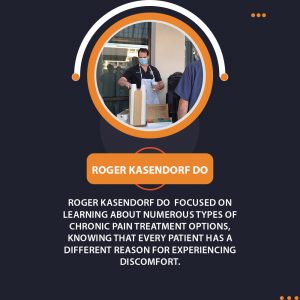Regenerative medicine and advanced therapies


Regenerative medicine and advanced therapies are emerging fields that aim to alleviate or cure many diseases and conditions. The success of these therapies depends on a highly skilled and trained workforce. GAO has analyzed the makeup of this workforce and their education and training needs.
Structural support cell therapy involves using your own adipose (fat) tissue to strengthen ligament structures and reduce pain at injured joints, tendons, or ligaments. This includes PRP injections and prolotherapy.
Cellular Therapies
Regenerative therapies use specialized cells to repair and replace damaged tissue. These cellular therapies offer the potential to address and cure many previously untreatable conditions.
Cell-based treatments can include platelet-rich plasma (PRP) injections and stem cell therapy. Regenerative medicine stem cells are harvested from a patient’s bone marrow or fat and delivered back into the body to help repair damaged tissues.
Researchers have also developed new methods to make regular adult cells act like embryonic stem cells without relying on human embryos, known as induced pluripotent stem (iPS) cells. This can avoid ethical issues associated with using human embryos and allow the immune system to accept the iPSCs.
Stem cell therapeutics can be administered in a variety of ways, including intravenous delivery, intrathecal administration (into the spinal canal), and direct injection into problem areas such as joints. Some clinical trials are already underway utilizing iPSC-derived retinal pigment epithelial cells and GRNOPC1 oligodendrocyte progenitor cells.
Tissue Therapies
Regenerative medicine therapies aim to restore damaged tissues and organs in order to treat conditions that were once considered incurable. These advanced therapies can decrease the need for transplants. Examples of these advanced therapies include fabricating sophisticated grafts and tissue mimics and using technologies that induce vascularization and innervation of the graft. Prolotherapy is a non-invasive form of regenerative therapy that treats injured connective tissue like joints, muscles, ligaments, and tendons. It involves injecting a watery solution containing saline and dextrose into the injury site. This stimulates the body to produce new connective fibers and heal the injury. This relieves pain and increases mobility.
Organ Therapies
Regenerative medicine offers the potential to heal and replace organs and tissues that have been lost due to disease or injury, as well as normalize congenital defects (1-2). It holds the promise of repairing the faulty mechanisms underlying disease initiation and progression, thus eliminating the need for donor organs and their subsequent immunosuppressive treatment.
Normothermic machine perfusion can not only maintain the graft in a more physiological state but also allow for the delivery of therapeutics to the graft. Many treatment modalities have been studied, all aimed at reducing IRI and improving outcomes after transplantation. Examples include the use of RNAi to target genes related to IRI as well as cellular therapies to deliver pro-regenerative factors directly to the graft.
Cellular therapies offer a promising new way of treating immune-related complications in organ transplant patients. Despite the fact that most of the clinical trials performed to date have shown safety, further exploration in large placebo-controlled studies is needed to demonstrate the efficacy of these therapies.
Bone and joint therapies
When the cartilage wears away, leaving bare bones, it can cause pain and lead to osteoarthritis (OA). Filling in those holes with new tissue relieves the pain, improves function, and possibly slows or avoids surgery.
Platelet-rich plasma, or PRP, is a solution containing concentrated amounts of platelets. These are cell fragments in your blood that help the body clot but also stimulate healing by releasing growth factors. When injected directly into injured tissue or a damaged joint, they reduce inflammation and encourage tissue to grow and repair itself.
The University of Iowa Health Care sports medicine team pioneered the use of ortho biologics, including platelet-rich plasma and amniotic membrane tissue, to help injured bones, cartilage, tendons, ligaments, or muscles heal themselves. Our experts are leaders in this cutting-edge area of regenerative medicine and participate in research trials on therapies for orthopedic conditions. They treat patients with regenerative injections for joint pain and injuries, including knee arthritis. They are also experts in arthroscopic procedures for knee, hip, shoulder, and elbow problems.
